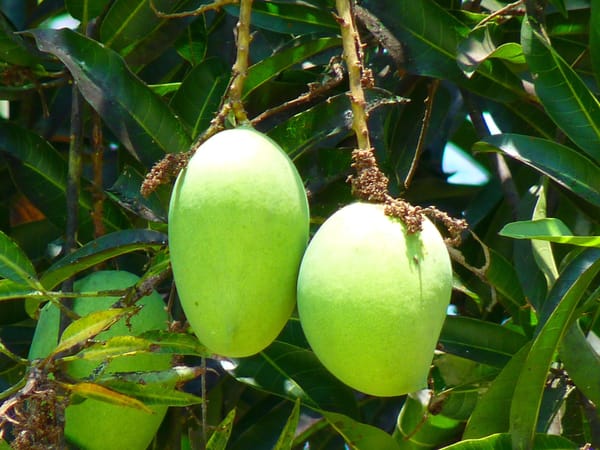Menacing mangos pack a punch for unsuspecting pickers
By Michael Selinger
As a lover of mangos, this season has been particularly enjoyable with the wide variety of the fruit available.
However, I was surprised to learn about a hidden risk of injury for mango pickers, which reminded me of the importance for all businesses to properly train and educate their staff about safe work processes, including wearing personal protective equipment (PPE).
Mango dermatitis is a hazard that applies to mango pickers in the harvesting season. The dermatitis is specific to the caustic nature of the sap that contacts the skin while picking (or handling the fruit).
When growing on the tree, the mango fruit contains a small amount of sap at high pressure near the stem. When the fruit is picked and the stem is broken off at the fruit rather than leaving a stump, the sap can sometimes squirt out up to three metres in distance.
Occasionally, sap can make contact with a picker’s upper body, face and hands and, in serious cases, their eyes. There is a variation in the severity of the rash from a mild irritation to severe reactions, including intense burning and blistering of the affected areas.
If left untreated, the rash can remain for several weeks.
Risk assessment identifies habit
The risk in picking mangos is just an example of the types of issues that employers across the country have to face every day in their organisations. That is, undertaking a risk assessment of the hazards posed to their workers and the systems that must be put in place to control and eliminate those risks.
In the case of mangos, attention is often placed on harvesting mangos with long stems of at least 5cm to stop the fruit squirting sap, as well as minimising the downgrading of the quality of the fruit due to sap burn.
Growers also use many systems to de-sap mangos, including dipping the field lugs in a solution of water and an approved detergent. The fruit is then left to drain the sap for around 30 minutes. The workers wear gloves to protect their skin from sap burn.
The other challenge faced by employers is the nature of the workforce that they engage to undertake the work for them.
Experienced workers will be aware of the risks and familiar with the systems. However, there are particular challenges for employers who are consistently engaging new workers or workers who are itinerant, like overseas or holiday workers.
The ABC reported that last year, after a ‘mango dermatitis awareness program’ initiated in the Northern Territory, there was a significant decline in the number of mango dermatitis cases presented during the mango season. This was despite a large number of the workers not possessing English as their first language.
In situations where employers engage parts of their workforce that lack experience in the industry, additional protections may be required, such as increased training and supervision.
Likelihood of harm
These additional controls become an issue where cost is involved and a balance must be struck between the likelihood of harm and the reasonableness of putting in those controls.
In the case of additional training, this should also factor in other areas of instruction that are required, eg: in fruit picking, instruction relating to other risks such as fatigue, manual handling and exposure to heat. In the case of additional supervision, organisations who rely on a workforce operating largely remotely and otherwise unsupervised, face a challenge of pin-pointing how much additional supervision is necessary and how much can be achieved practically.
So, like me, as you sit back and enjoy a mango or two over the summer period, spare a thought for the processes that the growers have put in place to ensure that workers are safe in harvesting that fruit for you.
Similarly, consider whether your organisation is active in managing the risks within its operations, including those risks that may be obvious to the more experienced workers, but not apparent at all to others.
From the experts behind the Health & Safety Handbook, the Bulletin brings you the latest work health and safety news, legal updates, case law and practical advice straight to your inbox every week.

